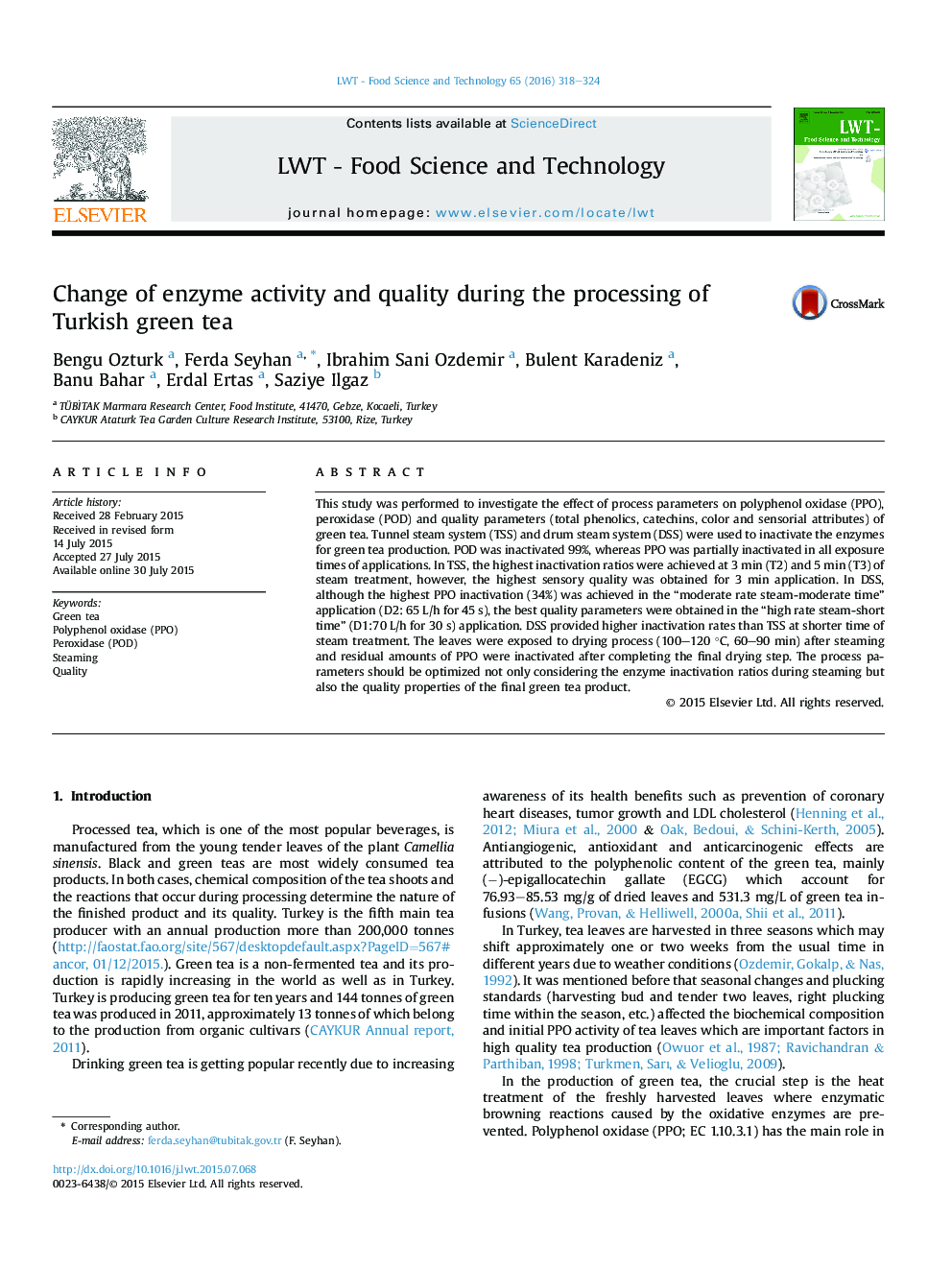| Article ID | Journal | Published Year | Pages | File Type |
|---|---|---|---|---|
| 6401542 | LWT - Food Science and Technology | 2016 | 7 Pages |
â¢Inactivation rate was lower in the leaves with high initial polyphenol oxidase activity.â¢Polyphenol oxidase was more resistant to steam treatment than peroxidase.â¢As the steam exposure time decreased, the quality of green tea increased.â¢Drum steam system was more effective at reducing polyphenol oxidase activity.â¢Drying conditions inactivated polyphenol oxidase totally.
This study was performed to investigate the effect of process parameters on polyphenol oxidase (PPO), peroxidase (POD) and quality parameters (total phenolics, catechins, color and sensorial attributes) of green tea. Tunnel steam system (TSS) and drum steam system (DSS) were used to inactivate the enzymes for green tea production. POD was inactivated 99%, whereas PPO was partially inactivated in all exposure times of applications. In TSS, the highest inactivation ratios were achieved at 3 min (T2) and 5 min (T3) of steam treatment, however, the highest sensory quality was obtained for 3 min application. In DSS, although the highest PPO inactivation (34%) was achieved in the “moderate rate steam-moderate time” application (D2: 65 L/h for 45 s), the best quality parameters were obtained in the “high rate steam-short time” (D1:70 L/h for 30 s) application. DSS provided higher inactivation rates than TSS at shorter time of steam treatment. The leaves were exposed to drying process (100-120 °C, 60-90 min) after steaming and residual amounts of PPO were inactivated after completing the final drying step. The process parameters should be optimized not only considering the enzyme inactivation ratios during steaming but also the quality properties of the final green tea product.
